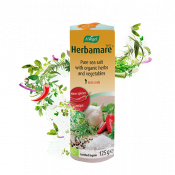1. Don’t forget about different forms of foods

Although cooking from scratch is the way to go, not all ingredients necessarily need to be fresh – frozen is an option too! In fact, fruit and vegetables frozen soon after harvest are thought to lock in those nutrients just fine. So, don’t get too caught up with the fresh vs. frozen debate – variety and using wholefoods is what is most important.
2. Pack those leftovers into portions
No matter how small a portion, pack leftovers into Tupperware boxes for another time. This will also mean you are more likely to stop eating when you’re full rather than forcing yourself to clear your plate. Keep leftovers covered in your fridge to have for lunch or even to have as part of a meal or a snack. Food will keep chilled in the fridge for up to 5 days and many dishes are suitable for home freezing too.
3. Don’t be afraid to use the freezer
Tip 2 leads me nicely into tip 3. A number of dishes are suitable for home freezing; saucy dishes such as soups and stews are ideal plus bread, meat, fish and even certain fruit, vegetables or herbs such as berries, chillies or lemongrass – your freezer will be loaded up before you know it!
4. Get planning

Planning is key for both eating well and saving money so, my favourite thing to do: make some lists! This means a full list of meals for the week ahead (remember to factor in any leftovers you might have) and then prepare a shopping list to go with it. As you work through each meal, check what ingredients you have already. Leftover vegetables from last week or herbs and spices in your cupboard or fridge can help keep your total spend down. Planning your meals around the fresh ingredients you already have is key and be sure to use up older ingredients first before they’re past their best!
5. Avoid creating excess food waste
This means keeping leftover portions, planning meals around what ingredients you already have, but also getting more experimental in the kitchen. Why not leave the last meal of your week free so you can make a dish out of the ingredients you have left in your fridge or freezer? This means leftovers can become more exciting – the way cooking should be! Experiment with different combinations and flavours and save a pretty penny whilst you’re at it. Another top tip from me is to use scraps, whether it’s meat, fish or vegetables, to create tasty bases for soups – ideal for a mid week lunch.
6. Buy wholefoods
Nowadays people are too tempted to buy packaged foods, even if they do contain fresh ingredients. Chopped onions are more likely to be more expensive than whole onions, so get chopping! Then, the next time you go to buy a pack of whole peppers or carrots, why not consider picking up the loose veg instead. It also means you can reduce waste too as you’ll be less likely to end up with more than you need. When it comes to foods such as wholegrains, bigger quantities are often better value, so stock up as these will keep just fine in a cool dry cupboard for future meals.
7. Learn how to read labels

Whilst it’s important to know how to read labels on the products themselves (be sure watch out for hidden sugar and nasties), you should also know how to read shelf edge labels so you can work out costs. If you’re unsure which form or size of a product is better value, simply refer to the shelf edge labels and look out for the lowest price per kg to find the best deal.
8. Don’t always be swayed by deals
Even with convincing shelf edge labels or offers such as buy one get one free make sure you are getting the best deal – ask yourself this – do you really need it? We can easily be swayed by deals which means that we purchase extras rather than essentials.
9. Or influenced by big brands...
Consumers are easily led and research has shown that they will often opt for branded products1 – even without giving much thought to the taste or nutritional value! Comparing food labels on your favourite brand to own brand products can be quite disconcerting – compare sugar levels for one and you might receive a shock! Remember, we shouldn’t necessarily be relying on brands in the first place anyway, try to cook from scratch wherever possible.
10. Don’t keep your gaze fixed

Did you know that many supermarkets use clever marketing ploys to lure you into their deals? Shelves at eye level usually stock their most popular lines (or brands) and products in the middle of aisles are often special offers. Don’t be easily led, look around and scope out the items on your well-prepared list.
11. Stick to your list!
In line with tip 10, if you stick to your list you’re less likely to be swayed by deals. Also, another top tip is not to shop when you’re hungry. If you’re hungry your list is more likely to increase at an alarming rate and you might be tempted to opt for convenience items or make poorer choices. Stay strong and stick to the list.
12. But at the same time, be flexible!
As much as it’s important not to veer off and be swayed by promotions, you shouldn’t necessarily be too set in your old ways. If one type of fish that you haven’t tried before is on special offer then don’t dismiss it, try it instead of your regular choice – remember variety is key and it’s often good to get out of those old routines. Plus, now that using your freezer more is top of mind, if there’s something new that you fancy trying you can always pop it in the freezer and save it for later.
13. Shop seasonal

In line with being flexible, it’s also helpful to shop seasonal. Certain fruit and vegetables are in season at certain times of year and their price will reflect this. Plus, did you know that fruits and vegetables are at their ripest and are most nutritious when they are in season? Traditionally, we would only eat certain foods in certain seasons and there’s good reason for this. So shop seasonal and taste the difference – or even better still, why not grow your own? This will also help save money in the long run and you can’t get much fresher than home grown!
14. Don’t disregard farmer’s markets
Although you might assume farmers markets are too pricey, this isn’t necessarily always the case. They are big on seasonal produce which is readily available locally and as a result, often more reasonably priced. Try going nearer the end of the day too when you’re more likely to get a bargain as closing deals are made.
15. Eat more veggie-based meals
Hopefully some of the voluptuous veg stalls at farmers markets can inspire you to cook more veggie-based meals. Not only is there evidence to suggest that a vegetarian or vegan lifestyle has a number of health benefits2, but veggies are also a whole lot cheaper than meat. So, when you’re planning your meals for the week ahead, remember to include some veggie versions of your favourite dishes. Head to our Eat Healthy section for more ideas!
16. Get your kids involved

There’s no better way to waste money than having to prepare two or even three different meals each night for dinner. There’s no reason why children shouldn’t be introduced to new flavours and eat a variety of good, home cooked meals. Save the chicken nuggets and chips for treats only!
17. Make eating out a treat
Nowadays we are too reliant on convenience meals and eating out and the cost of this can soon mount up. Save eating out for special occasions and make these trips more of a novelty rather than weekly habit. Your purse will thank you for it too!
1. Peeter W.J. Verlegh, Marieke L. Fransen & Amna Kirmani (2015) Persuasion in advertising: when does it work, and when does it not?, International Journal of Advertising, 34:1, 3-5, DOI: 10.1080/02650487.2014.994732
2. Key, T., Appleby, P., & Rosell, M. (2006). Health effects of vegetarian and vegan diets. Proceedings of the Nutrition Society, 65(1), 35-41. doi:10.1079/PNS2005481





 Looking for our products in a store near you?
Looking for our products in a store near you?


